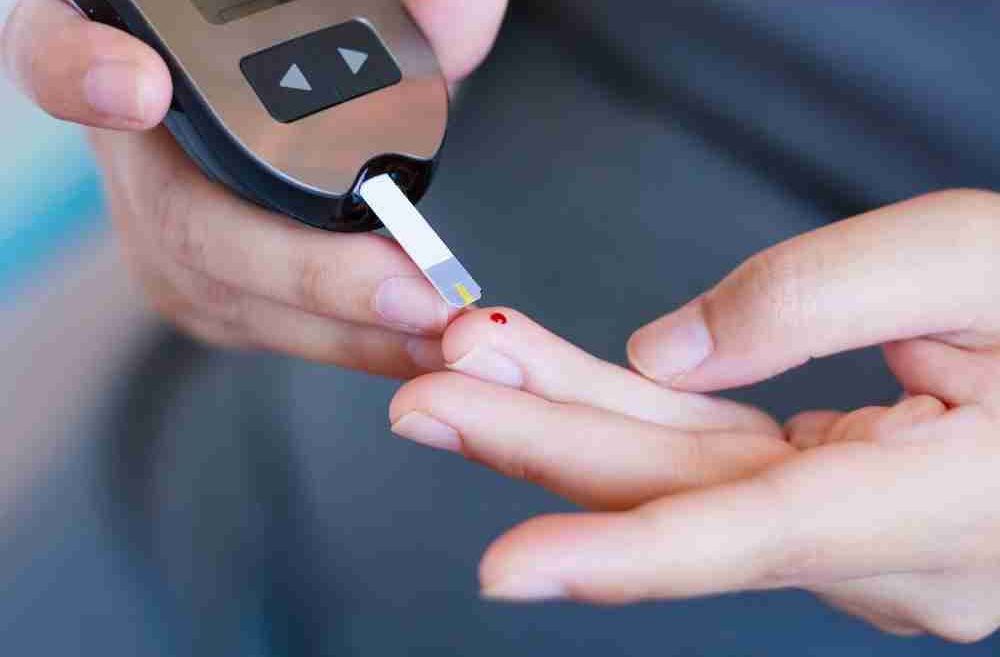Diabetes is a health condition in which the body can’t maintain healthy levels of glucose in the blood.

Unhealthy levels of glucose in the blood can then lead to short- and long- term health complications which can affect the entire body, cause serious damage and have a significant impact on quality of life. Although there is no cure for Diabetes, with the right education and management strategies, it’s entirely possible to live an enjoyable life with Diabetes.
Types of Diabetes
There are four main types of Diabetes:
Type 1 Diabetes
Type 1 Diabetes is an autoimmune condition where the immune system destroys the cells (beta cells) in the pancreas which produce insulin. Insulin is a hormone that allows glucose (sugar) to enter cells to produce energy from the food we eat.
Type 1 diabetes accounts for 10% of all diabetes
T1DM requires insulin for glucose uptake otherwise can result in high blood glucose levels. Proper monitoring is required to ensure hypoglycaemia does not occur (low blood sugar level). T1DM often is genetic and typically presents in children and adolescents.
Type 2 Diabetes
Type 2 diabetes occurs when the body resists the effects of insulin (insulin resistance) and/or cannot produce enough insulin to maintain blood glucose levels within the target range. This can lead to increased blood glucose levels (Hyperglycemia) that can be life-threatening.
Type 2 diabetes accounts for 85% of all diabetes and is increasing
There is no single cause of type 2 diabetes, however genes play a role in the risk of developing Type 2 Diabetes and there are well-established risk factors, many of which can be controlled. Type 2 Diabetes is sometimes referred to as a lifestyle condition because many of the risk factors are lifestyle choices and the combination of changes to diet, physical activity and sedentary work have resulted in an increase in the prevalence of type 2 diabetes in most populations.
Pre-Diabetes
A condition in which blood glucose is elevated, but not high enough to be Type 2 Diabetes. There are no symptoms. Lifestyle changes, weight loss and medication can prevent the progression of Pre-Diabetes to Type 2 Diabetes and reduce the risk of CVD.
There are two pre-diabetes conditions:
- Impaired glucose tolerance (IGT) is where blood glucose levels are higher than normal but not high enough to be classified as diabetes.
- Impaired fasting glucose (IFG) is where blood glucose levels are escalated in the fasting state but not high enough to be classified as diabetes.
- It is possible to have both Impaired Fasting Glucose (IFG) and Impaired Glucose Tolerance (IGT)
Gestational Diabetes
Gestational diabetes mellitus A form of high blood glucose affecting pregnant women and is diagnosed when higher than normal BGLs first appear during pregnancy. Most women won’t continue to have diabetes after pregnancy, but those who develop gestational diabetes are at higher risk of developing Type 2 Diabetes later in life.
Gestational diabetes is the fastest growing type of diabetes in Australia, affecting thousands of pregnant women.
Diagnosis
All types of diabetes are increasing in prevalence, with Type 2 diabetes increasing at the fastest rate. There are large numbers of people with silent, undiagnosed type 2 diabetes which may be damaging their bodies. An estimated 2 million Australians are at high risk of developing type 2 diabetes and are already showing early signs of the condition.

Anyone at high risk or experiencing symptoms should see their GP to rule out Diabetes. The most common test used for diagnosing Type 1, Type 2 and Pre-Diabetes is the HbA1C blood test which indicates the average blood glucose level over the past 2-3 months. Other tests that can be used as alternatives include Random Blood Sugar Test, Fasting Blood Sugar Test, Oral Glucose Tolerance Test. The oral glucose tolerance test (OGTT). is used for Gestational Diabetes. All pregnant women should be tested for gestational diabetes at 24-28 weeks of pregnancy (except those women who already have diabetes). Women who have risk factors for gestational diabetes should be tested earlier in their pregnancy.
Symptoms & Risks of Diabetes
In type 1 diabetes, symptoms are often sudden and can be life-threatening; therefore it is usually diagnosed quite quickly. In type 2 diabetes, many people have no symptoms at all, while other signs can go unnoticed being seen as part of ‘getting older’.
Therefore, by the time symptoms are noticed, complications of diabetes may already be present.
Common symptoms include:
– Being more thirsty than usual
– Passing more urine
– Feeling tired and lethargic
– Always feeling hungry
– Having cuts that heal slowly
– Itching, skin infections
– Blurred vision
– Unexplained weight loss (type 1)
– Gradually putting on weight (type 2)
– Mood swings
– Headaches
– Feeling dizzy
– Leg cramps
Depression, anxiety and distress occur in more than 30% of all people with diabetes
While Diabetes can be well-managed, the potential complications include heart attack, stroke, kidney disease, limb amputation, depression, anxiety and blindness.
- Is the leading cause of blindness in working age adults
- Is a leading cause of kidney failure and dialysis
- Increases the risk of heart attacks and stroke by up to four times
- Is a major cause of limb amputations
Find more great resources about Diabetes:
Diabetes Australia
Diabetes Queensland
NDSS
Read more:
